Calculation of bimetallic radiators for area, volume and for
What is the calculation of bimetallic radiators on the area of the dwelling? How to calculate the number of sections required for heating a house or apartment with a non-standard ceiling height? In our article we will try to find answers to these and some other questions.
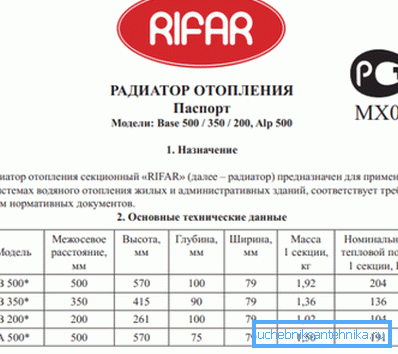
Stages of calculation
Calculation of bimetallic radiator sections of heating consists of two stages:
- Estimation of the need for heat capacity;
Note: by area it can be calculated only with standard (corresponding to the current SNiP) insulation of building envelopes and standard (2.5 meters) ceiling height. In other cases, the settlement scheme is considerably complicated.
- Recalculation of thermal power in the number of sections taking into account the heat flux corresponding to one section.
Heat flow to the section
Let's start with a simpler task. The calculation of the bimetallic radiator section implies the need for reference data - heat flux for one section. Here are its estimated values for different sizes of heaters:
| Section height (center distance between collectors), mm | Heat flow, W / section |
| 200 | 90 |
| 350 | 120 |
| 500 | 180 |
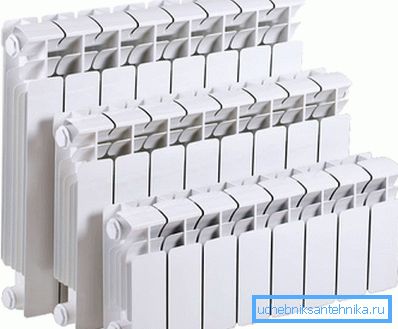
However, as is customary in such cases, the trick is in the details.
- Manufacturers report the heat flux value for the coolant temperature in 90 ° C at a temperature in a heated room of +20 C (Dt = 70 C). The cost of reducing the temperature of the coolant to +55 C (Dt = 55 C) is a two-fold drop in the power section;
- At lateral connection of the radiator and its considerable length, the power of the end sections (after the 10th) will decrease by 10-40%;
- Connecting from the bottom to the bottom will cause the section power to drop by 10 - 13%, but guarantees uniform heating over the entire length;
- Diagonal connection at any length of the battery will provide heat transfer 2-3% below nominal;
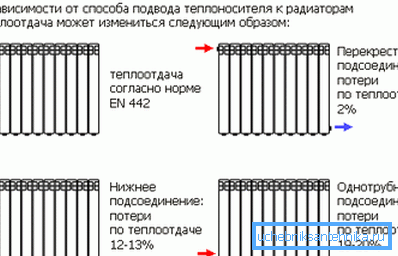
- Silting the end sections over several years will again reduce their heat transfer by 1.2–1.5 times;
- Finally, installing a heater in a niche or box will also have a detrimental effect on heating efficiency.
Tip: power calculation is best done with a safety factor of 1.2. Excess power can be reduced by choking the device with a cone valve or thermal head.
Scheme
Simple area calculation
The calculation of the area of bimetallic radiators is extremely simple:
- Per 1 m2 of heated space in the project laid thermal power of 100 watts;
- For cold and warm regions of the country, the correction factor is used (from 0.7 for the Krasnodar Territory to 2.0 for Chukotka and Yakutia). So, for a 15-meter room in the Khabarovsk Territory (a regional coefficient of 1.6) it will take 15 * 100 * 1.6 = 2400 watts of heat. With a section power of 180 watts, their minimum quantity will be 2400/180 = 14 (with rounding) pieces.
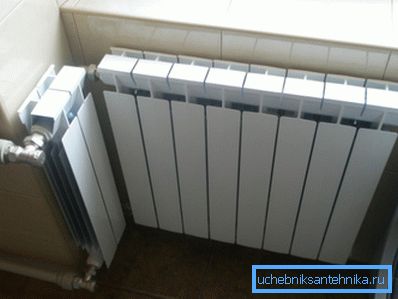
Curiously: a typical calculator for calculating bimetallic heating radiators on the websites of sellers or manufacturers uses just such a calculation algorithm. Additional factors, such as the degree of building insulation or ceiling heights, are extremely rare.
Calculation by volume
It is clear that with a significant height of the ceilings in the apartment the need for heat will increase dramatically: the greater the volume of air, the more heat energy will be required to heat it to a temperature that meets sanitary standards.
For rooms of non-standard height, a few corrected instructions are often used, taking into account a number of additional factors:
- On 1 m3 of volume in the project 40 W of thermal power is laid;
- For corner and front apartments in an apartment building, an amendment factor of 1.2 is used, for extreme floors, 1.3;
- An additional 100 watts is added to each window;
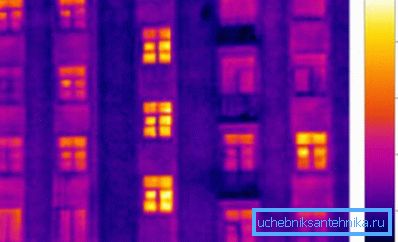
- The regional coefficient (0.7 - 2.0) is also taken into account.
Let's do it with our own hands to calculate the need for heat of a room with one window located in the middle of an apartment building in the city of Yalta (Crimea) with its dimensions of 4.6 x 5.7 meters and a ceiling height of 4.5 meters.
- The volume of the room will be 4.6 * 5.7 * 4.5 = 118 m3;
- The regional coefficient for Yalta (average January temperature +4 C) is 0.7; There are no other correction factors;
- The need for heat will be (118 * 40 + 100) * 0.7 = 3374 watts;
- Calculating the number of sections of bimetallic radiators of heating will give us when the power section of 180 watts value 19.
Recall: with such a length of the heater, it is connected from the bottom to the bottom or diagonally.
Calculation by volume for non-standard warming
The most universal scheme, which takes into account the volume of the room, the temperature difference with the street and the integral coefficient of building insulation: Q = V * Dt * k / 860.
Wherein:
- Power Q we get in kilowatts;
- As Dt, the difference between the mean internal temperature (for a dwelling - the sanitary norm of temperature) and the average minimum of the coldest month of winter is used;

- k is taken from the following table:
| K value | Building insulation |
| 0.6-0.9 | Foam fur coat, metal-plastic windows with triple energy-saving double-glazed windows |
| 1-1.9 | Brick walls in two bricks, double glazing |
| 2-2.9 | Brick walls in brick, single glazing |
| 3-3.9 | Non-insulated building (cold warehouse, workshop, etc.) |
Let's once again calculate the need for heat for our room in Yalta, but with a few new introductory ones:
- The building is not insulated from the outside and is made of brick. Masonry thickness - 500 mm. Double glazing;
- With a sanitary norm of winter temperature in a residential area of +18 C, the average minimum of January in Yalta is -3C.
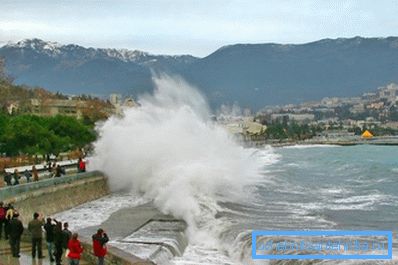
We proceed to the calculations.
- We have already calculated the volume of the premises earlier - 118 m3;
- Dt is equal to the difference of + 18C and -3C - 21 degrees;
- We take the coefficient of insulation equal to 1.1;
- The calculation as a whole will take the form Q = 118 * 21 * 1.1 / 860 = 3.16 kW, or 3160/180 = 18 sections.
Conclusion
As you can see, the applied calculation schemes for heating devices are quite diverse and predictably give some variation in results. Learn more about how to calculate the bimetallic radiators, help video in this article. Successes!